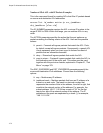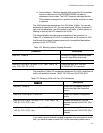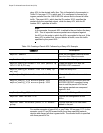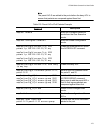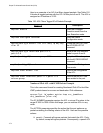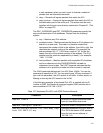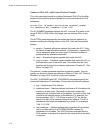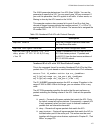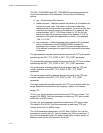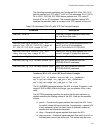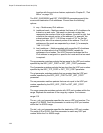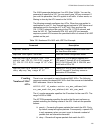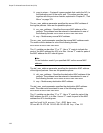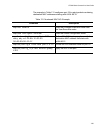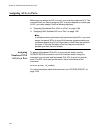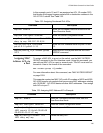Chapter 73: Advanced Access Control Lists (ACLs)
1178
The SRC_IPADDRESS and DST_IPADDRESS parameters specify the
source and destination IPv4 addresses. Choose from the following
options:
any— Matches any IPv4 address.
ipaddress/mask— Matches packets that have an IPv4 address of a
subnet or an end node. The mask is a decimal number that
represents the number of bits in the address, from left to right, that
constitute the network portion of the address. For example, the
subnet address 149.11.11.0/24 has a mask of “24” for first the
twenty-four bits of the network portion of the address. The IPv4
address and the mask are separated by a slash (/); for example,
“149.11.11.0/24.”
host ipaddress— Matches packets with a specified IPv4 address
and is an alternative to the IPADRESS/MASK variable for
addresses of end nodes. The HOST keyword indicates that the
IPv4 address is assigned to a specific end node and that no mask
is required.
The eq parameter matches packets that are equal to the TCP port number
specified by the SRC_TCP_PORT or DST_TCP_PORT parameter.
The lt parameter matches packets that are less than the TCP port number
specified by the SRC_TCP_PORT or DST_TCP_PORT parameter.
The gt parameter matches packets that are greater than the TCP port
number specified by the SRC_TCP_PORT or DST_TCP_PORT
parameter.
The ne parameter matches packets that are not equal to the TCP port
number specified by the SRC_TCP_PORT or DST_TCP_PORT
parameter.
The range parameter matches packets with TCP port numbers within the
range. Separate the numbers of the range by a space. For instance:
range 4 10
The src_tcp_port parameter specifies the source TCP port number. The
range is 0 to 65535. Omit this parameter to match any TCP port number
within the 0 to 65535 range.
The dst_tcp_port parameter specifies the destination TCP port number.
The range is 0 to 65535. Omit this parameter to match any TCP port
number within the 0 to 65535 range.
The VLAN parameter determines if an ACL filters VLANs. You use the
parameter to specify the VID. You can specify one VID per command. If
you omit this parameter, the ACL applies to all traffic. In other words, no
filtering is done by the ACL based on the VLAN.



